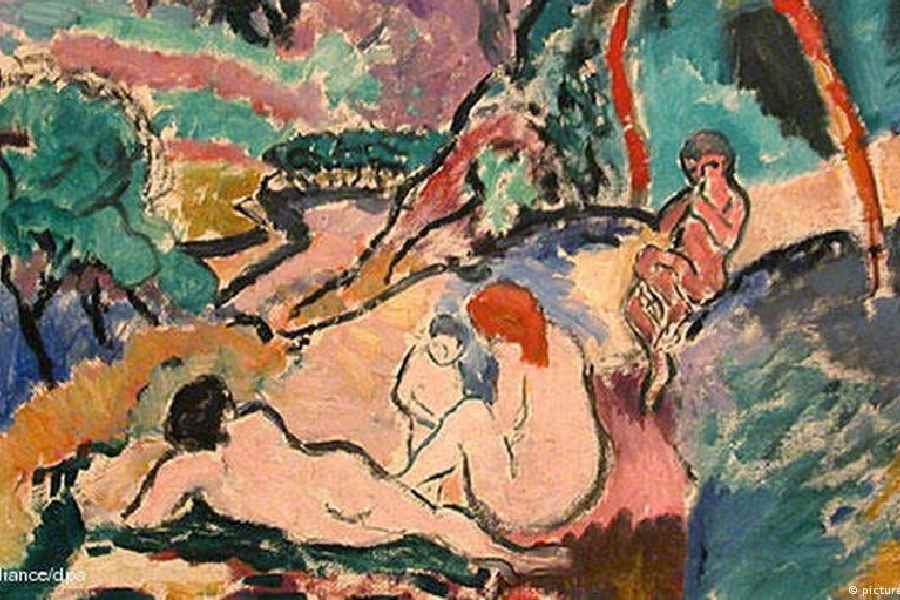From "Poppy Flowers" by Vincent Van Gogh to Rembrandt's missing masterpiece, "Christ in the Storm on the Sea of Galilee," to Nazi-looted works by the likes of Gustav Klimt, absence has made the heart grow fonder for long-lost artistic treasures.
In 1969, thieves stole the "Nativity with St. Francis and St. Lawrence," an early Baroque painting by Italian artist Caravaggio, which the artist completed in 1609 and which hung in a church in Palermo on the island of Sicily. Fifty-five years later, its whereabouts remains a mystery.
Depicting the birth of Jesus, the vast work extending near 3 meters in height was removed from its frame in the church by two thieves. It allegedly fell into the hands of the Sicilian Mafia.
After the infamous art crime was investigated by the US Federal Bureau of Investigation, Interpol and Italian police, it is believed to remain in Sicily and could fetch around $20 million (€18.43 million). Several Mafia members are said to have attempted sales on the black market, with one arrested in 1981 after he was said to have buried the masterpiece.
Meanwhile, five paintings worth hundreds of millions of euros were stolen from the City Museum of Modern Art in Paris in 2010, including Pablo Picasso's "The Pigeon with Green Peas," Henri Matisse's "Pastoral" and Georges Braque's "Olive tree near l'Estaque."
These also have never been found — despite the thief having stood trial. The unprecedented French heist was described by one city official as "one of the worst events for the city of Paris, on a par with the Notre Dame fire, earth-shattering for France and the world."
World's top unsolved art crimes
The long-lost Caravaggio mentioned above features in the FBI's published list of Top 10 Art Crimes, which also includes works by Dutch master Van Gogh.
For instance, the $55 million-valued "Poppy Flowers," an 1887 painting by Van Gogh, was stolen twice from Cairo's Mohamed Mahmoud Khalil Museum — first in 1977 before it was found a decade later, and then again in August 2010 — the last time it was seen.
Four paintings by Van Gogh, Paul Cezanne, Edgar Degas and Claude Monet respectively were stolen in 2008 from a Swiss museum in what was described as a "spectacular art robbery." Masked and armed men entered the Emil Bührle Collection at the Kunsthaus Zurich and removed the masterpieces, before taking off in a car.
Recovering missing art
Luckily for art lovers, some of these works have found their way back to their rightful owners.
The perpetrators of the 2019 Dresden Green Vault Museum heist that saw 18th-century jewels worth more than €113 million stolen were bought to justice in 2023 — even if all the jewels did not turn up with the thieves.
A diamond encrusted sword hilt was among numerous recovered items, but some may never be seen again.
Former lawyer Christopher A. Marinello founded the UK-based Art Recovery International (ARI) as a means to help recover stolen, looted and missing works of art. He provided information to aid in the recovery of the Dresden jewels.
Marinello told DW that he received "a number of tips from various sources on the whereabouts of the stolen jewelery," and passed the information to law enforcement investigating the case.
"Most of our work begins when stolen and looted objects are being offered for sale," he said of ARI's recovery strategy.
"We attempt to stop the sale and negotiate a discreet resolution with the possessors and the victims," Marinello explained, adding that such negotiated out-of-court settlements save "expensive public litigation."
ARI has recently also helped return screenprints by Andy Warhol valued at $500,000 from the pop artist's Endangered Species Series.
Earlier this year, Spanish police also recovered a painting by British artist Francis Bacon that was stolen from a Madrid apartment in 2015.
Returning Nazi-looted art
Marinello also targets artworks looted by the Nazis, including a work by Polish art deco painter, Tamara De Lempicka, titled "Myrto," that was stolen from war-time France.
Locating these Nazi-looted masterworks, many from Jewish families and art dealers, is often difficult.
"People who knowingly possess stolen or Nazi-looted works of art have no scruples or moral inclination to return someone else's property," said Marinello, who is actively searching for looted art by French impressionists Pierre-Auguste Renoir, Camille Pissarro and Edgar Degas.
"Such individuals hide behind German privacy laws to protect their ill-gotten goods to the detriment of crime victims and victims of the Holocaust," he added.
Nonetheless, the investigator noted that a number of stolen works come into the hands of "honest dealers and auction houses" who are willing to work to have the art returned.
In 1976, German performance artist Ulay (1943-2020) decided to symbolically loot Nazi art when he stole Adolph Hitler's favorite painting, "The Poor Poet" (1839) by Carl Spitzweg.
Documented on camera as part of his performance, Ulay (whose real name was Frank Uwe Laysiepen) strolled into the National Gallery in Berlin, grabbed the artwork and drove with it to the poor immigrant enclave of Kreuzberg to hang it on a Turkish family's apartment wall. Before entering their apartment, though, he stopped at a phonebooth on the street and called the museum authorities to inform them where they could retrieve the painting.
"I made a statement that this was a demonstrative action, not a theft in the traditional sense," Ulay would later explain. He considered it a "protest action, first of all against the institutionalization of art, secondarily about discrimination against foreign workers."










